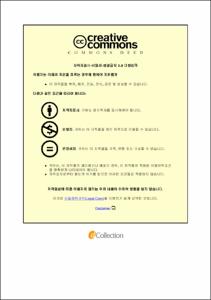만성 B형 간염 초치료 환자와 항바이러스제 내성 환자에서의 테노포비어의 효과 비교
- Abstract
- Backgrounds: Uncontrolled hepatitis B virus infection can be cause of chronic hepatitis, cirrhosis and hepatocellular carcinoma. Oral nucleos(t)ide analogues (NA) are very effective for viral suppression, however suboptimal response and genotypic resistance are major problem in treating chronic hepatitis B (CHB). Tenofovir disoproxil fumarate (TDF) is potent NA, and TDF is very effective for NA-failed CHB. However, there is controversy in TDF efficacy between NA-failed and NA-naïve patients. The present study aimed to compare the antiviral effects of TDF between NA-naïve and NA-failed CHB patients. In addition, we also compared antiviral effects of TDF according to mutation pattern in NA-failed CHB, especially multi-drug resistant (MDR).
Methods: Medical records of 735 patients with CHB who had treated with TDF were reviewed. Of the 735 eligible patients, 466 were NA-naïve and 269 were NA-failed prior to TDF therapy. The cumulative probability rates of clinical outcomes were calculated using the Kaplan–Meier method. We also performed multivariate Cox regression analysis to evaluate the association between mutation pattern and virologic response (VR) during TDF treatment for control of the potential confounders. A matched study population was constructed to compare the antiviral efficacy of TDF therapy by a propensity score analysis, because baseline characteristics of two groups were different significantly.
Results: One hundred eighty-eight CHB patients were selected after matching propensity score with 1:1 ratio. There was statistically significant difference in VR between the NA-naive and the NA-failed group (84 [89.3%] vs. 72 [76.5%], respectively; P = 0.016). NA-naïve patients showed higher cumulative rate of VR than NA-failed patients (78.6% vs. 58.3% at 12 months and 94.7% vs. 79.8% at 24 months; log-rank P = 0.001). Alanine transaminase (ALT) normalization rates, partial virolgoic response (PVR) and virologic breakthrough were not significantly different. Multivariate analysis using selected baseline factors identified HBV-DNA levels at starting TDF treatment (P < 0.001; OR, 0.790; 95% CI, 0.689-0.855), HBeAg positivity (P = 0.003; OR, 0.605; 95% CI, 0.415–0.834), as factors showing significant association with VR. We divided NA-failed group into three groups (NA-experienced, lamivudine-resistant, and MDR group). NA-experienced and lamivudine-resistant groups did not show significant difference in VR compared with NA-naïve group. However, MDR group showed lower VR than NA-naïve group (35 [66%] vs. 84 [89%], respectively; P = 0.002). In the multivariate analysis, MDR patients (OR, 0.502; 95% CI, 0.332–0.760; P = 0.001) remained predictive factor for VR.
Conclusions: In patients with NA-failed, the efficacy of TDF was lower than NA-naïve patients, especially MDR group. Therefore, TDF is best choice for naïve patients and early switching in NA-failed patients with low viral load state. Long term observational and well-controlled studies are warranted for proving these results.
|배경 : 만성 B형 간염은 만성 간염, 간경변 그리고 간세포암종의 원인이 될 수 있다. 경구용 항바이러스제는 바이러스 억제에 매우 효과적이지만, 유전자형 변이와 불충분한 반응은 만성 B형 간염을 치료함에 있어 큰 문제가 되고 있다.엔테카비어 (entecavir) 나 테노포비어 (tenofovir dixoproxil fumarate)는 강력한 항바이러스제로서, 만성 B형 간염 초치료에 일차약제로 사용되고 있다. 그러나, 테노포비어 치료에 대한 아데포비어 (adefovir dipivoxil) 내성환자와 초 치료 환자에서의 효능차이에 대해서는 논란의 여지가 있다. 그리고, 초 치료 환자와 엔테카비어 내성환자에서 테노포비어 효능의 비교에 대한 연구결과 또한 제한적이다. 이에 본 연구는 항바이러스제 초 치료 환자들과 항바이러스제 치료실패 환자들에서 테노포비어의 효능을 비교하였다.
방법 : 테노포비어로 치료를 받은 환자 735명의 만성 B형 간염 환자의 의무기록을 조사하였다. 735명 중 466명은 초치료 환자였으며, 269명은 항바이러스제 치료실패 환자들이었다. 양군에서 바이러스 반응, 부분 바이러스 반응, 바이러스 돌파 여부를 비교하였다. 초 치료 환자군과 항바이러스제 내성 환자들의 변수를 통제하기 위해, 프로펜시티 스코어 분석 (propensity score analysis)을 이용하여, 각각의 변수들을 보정한 양군에서 테노포비어 효과를 비교하였다.
결과 : 프로펜시티 스코어 분석을 통해 1:1 의 비율로 각군에서 94명의 환자들이 선택되었다. 항바이러스제 초 치료 환자군이 항바이러스제 치료실패 군보다 바이러스 반응이 높았다 (84 [89.3%] vs. 72 [76.5%], P = 0.016). 항바이러스제 초 치료 환자군이 항바이러스제 치료실패 환자군보다 12개월 및 24개월에서 높은 누적 바이러스 반응율을 보였다 (78.6% vs. 58.3% at 12 months and 94.7% vs. 79.8% at 24 months; log-rank P = 0.001). 생화학적 반응, 부분 바이러스 반응 및 바이러스 돌파는 양군간에 유의미한 차이가 없었다. 다변량 회귀 분석에서 테노포비어 시작시점의 혈청 B형간염 바이러스 DNA 양 (HBV DNA) (OR, 0.790; 95% CI, 0.689-0.855; P < 0.001), B형 간염 e 항원 양성 (OR, 0.605; 95% CI, 0.415–0.834; P = 0.003)이 바이러스 반응의 독립적인 예측인자로 밝혀졌다. 항바이러스제 치료실패군을 항바이러스제 경험군, 라미부딘 내성군 및 다약제 내성군으로 나누어 분석하였다. 항바이러스제 경험군과 라미부딘 내성군은 항바이러스제 초치료군과 비교하였을 때, 바이러스 반응의 유의미한 차이가 없었다. 그러나, 다약제 내성군은 초치료군보다 낮은 바이러스 반응율을 보였다 (35 [66%] vs. 84 [89%], respectively; P = 0.002). 다변량 회귀 분석에서도 다약제 내성군이 바이러스 반응의 독립적인 예측인자로 밝혀졌다 (OR, 0.502; 95% CI, 0.332–0.760; P = 0.001)
결론 : 테노포비어는 항바이러스 치료실패군에서 초치료군에 비해 낮은 항바이러스 효과를 보였다. 따라서, 테노포비어는 항바이러스제 초치료 환자와 항바이러스제 내성환자인 경우 혈청 바이러스양이 적은상태에서 조기약물 교체가 높은 효과를 보일것으로 사료되며 이를 입증하기 위해서 장기간의 연구가 필요하다.
- Issued Date
- 2017
- Awarded Date
- 2018-02
- Type
- Dissertation
- Alternative Author(s)
- Jae-ho, Park
- Affiliation
- 울산대학교
- Department
- 일반대학원 의학과
- Advisor
- 박능화
- Degree
- Doctor
- Publisher
- 울산대학교 일반대학원 의학과
- Language
- eng
- Rights
- 울산대학교 논문은 저작권에 의해 보호받습니다.
- Appears in Collections:
- Medicine > 2. Theses (Ph.D)
- 파일 목록
-
-
Download
 200000015182.pdf
기타 데이터 / 439.78 kB / Adobe PDF
200000015182.pdf
기타 데이터 / 439.78 kB / Adobe PDF
-
Items in Repository are protected by copyright, with all rights reserved, unless otherwise indicated.